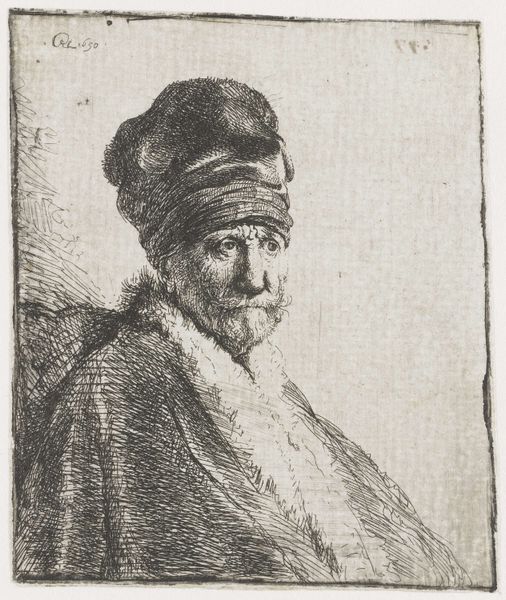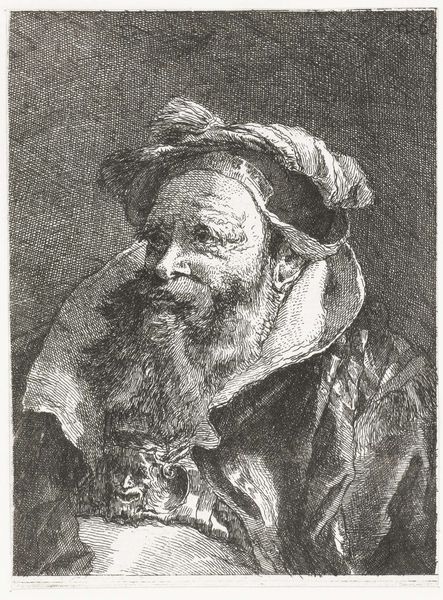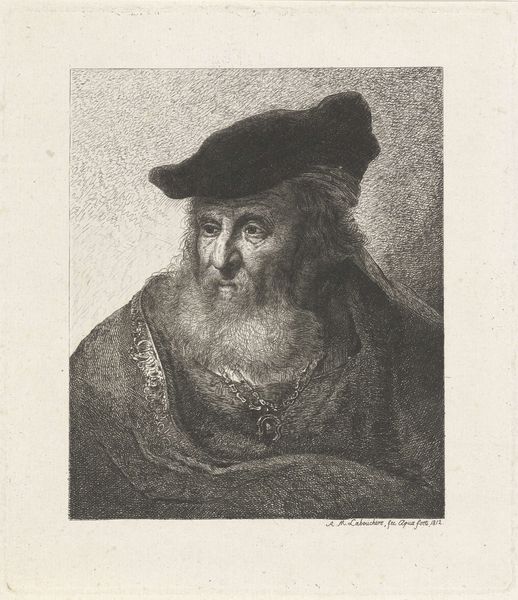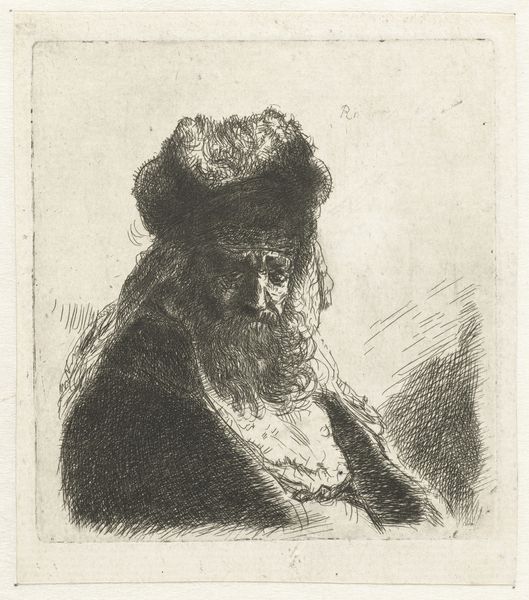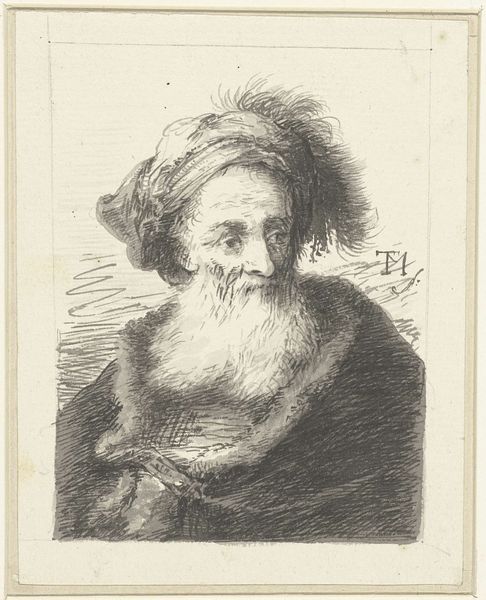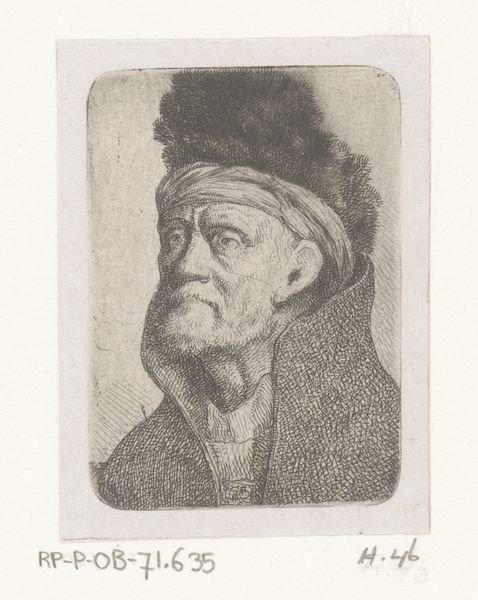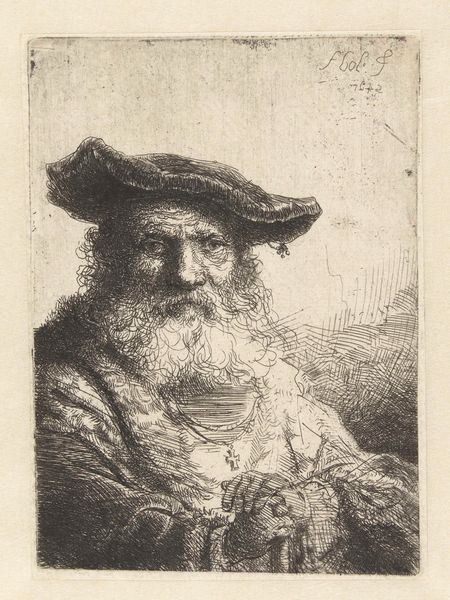
#
pencil drawn
#
pencil sketch
#
old engraving style
#
charcoal drawing
#
portrait reference
#
pencil drawing
#
limited contrast and shading
#
animal drawing portrait
#
portrait drawing
#
pencil work
Dimensions: height 127 mm, width 108 mm
Copyright: Rijks Museum: Open Domain
Curator: Looking at this compelling piece, we see “Portret van Michel Hirsch, rabbijn te Potsdam,” a portrait of Rabbi Michel Hirsch, circa 1773-1840, crafted in pencil. What's your immediate take? Editor: Oh, it has that whisper of old libraries, all dusty wisdom and secrets etched in paper. That intense gaze, the chaotic fur hat… he’s seen things, hasn't he? Curator: Indeed. Considering the historical context, images of religious figures, particularly those representing marginalized communities, carry significant weight. The softness of the pencil almost humanizes him, countering potential stereotypes. Editor: You’re right. And there's something beautiful about the unfinished quality, almost like we're catching him in a moment of private reflection. Does the lack of vibrant detail obscure certain parts of his story, do you think? Curator: Possibly. The incomplete nature can invite speculation—forcing us to consider the limitations of representation itself, who is given prominence, and the erasures inherent in portraiture during this period of social and religious upheaval. Editor: The artist, while anonymous, seems less concerned with flawless realism, and more with capturing a flicker of soul, a human truth behind the title. Curator: Precisely, and through a contemporary lens, this opens up critical conversations around representation, power dynamics, and visibility for religious minorities then, as mirrored now. This work pushes back against singular narratives. Editor: It makes me think of my grandfather, with his booming stories and twinkling eyes, all wrapped up in layers of tradition. This rabbi has that same depth—you feel it more than see it. Curator: Absolutely, that intimate emotional connection is invaluable when considering historical works. Editor: I appreciate this work’s quiet resistance to a world obsessed with perfect images and loud pronouncements. It honors the quiet stories. Curator: And situates individual identity within a much larger narrative tapestry of cultural memory, religious identity, and the politics of representation. It encourages questioning. Editor: A quiet question posed across time. A tender testament.
Comments
No comments
Be the first to comment and join the conversation on the ultimate creative platform.


